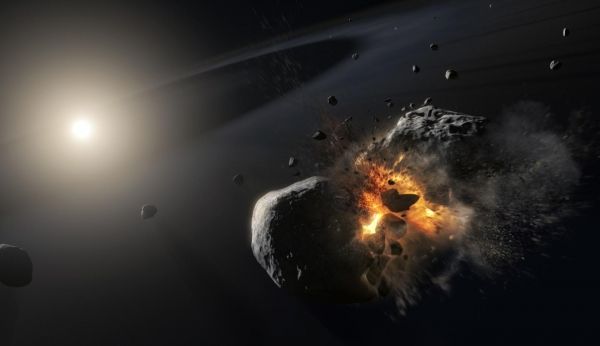Now you see it, now you don't.
What astronomers thought was a planet beyond our solar system has now seemingly vanished from sight. Though this happens in science fiction, such as Superman's home planet Krypton exploding, astronomers are looking for a plausible explanation.
One interpretation is that, rather than being a full-sized planetary object, which was first photographed in 2004, it could instead be a vast, expanding cloud of dust produced in a collision between two large bodies orbiting the bright nearby star Fomalhaut. Potential follow-up observations might confirm this extraordinary conclusion.
"These collisions are exceedingly rare and so this is a big deal that we actually get to see one," said András Gáspár of the University of Arizona, Tucson. "We believe that we were at the right place at the right time to have witnessed such an unlikely event with NASA's Hubble Space Telescope."
Read more at NASA/Goddard Space Flight Center
Image: This artist's illustration depicts the collision of two 125-mile-wide icy, dusty bodies orbiting the bright star Fomalhaut, located 25 light-years away. (Credit: ESA, NASA and M. Kornmesser)


